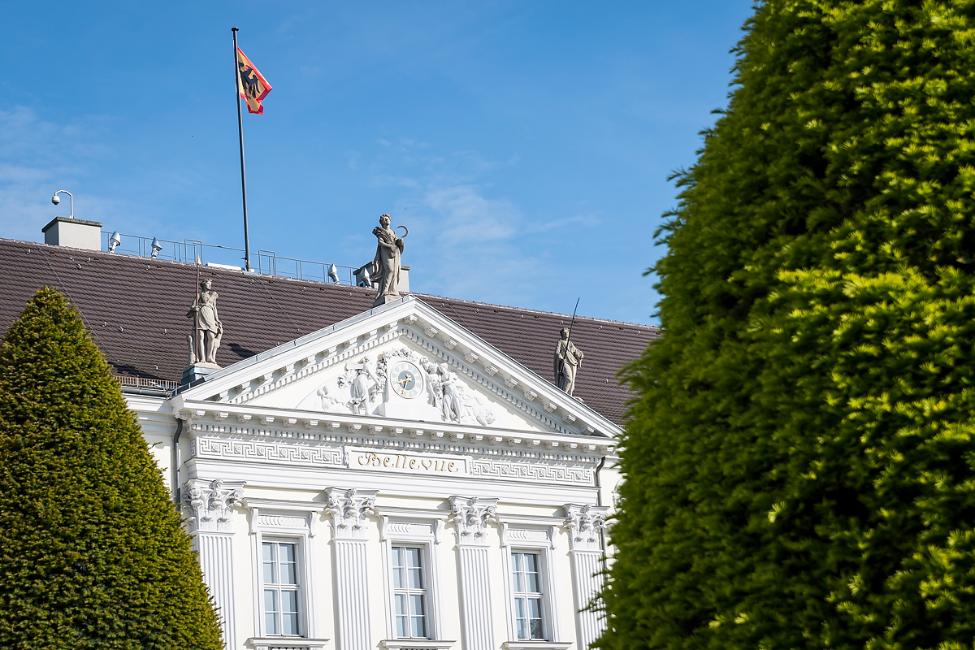Prince August Ferdinand of Prussia, the youngest brother of Frederick the Great, commissioned the architect Michael Philipp Boumann to build Schloss Bellevue between 1785 and 1787 in a style blending baroque and neoclassicist elements. The large park was one of the most beautiful Prussian landscape gardens. It was the fantastic view over the surrounding park which gave the palace the name "Bellevue".
The palace was intended as a residence; representative needs were not to the fore. As a result, the entrances were positioned in the two corner projections and were equipped with simple staircases to the upper floor; a large ballroom was not planned.
Prince Ferdinand's guests included Friedrich Schiller, Napoleon and Wilhelm and Alexander von Humboldt. Even after his death, the palace remained in the family and continued to serve as a residence and guest house.
With the "Vaterländische Galerie" (Patriotic Gallery), Schloss Bellevue housed the first museum of contemporary art in Prussia from 1844 to 1865. At this time, the park was also opened to the public.
After the First World War, the palace and park remained unchanged. In 1928, ownership was passed from the House of the Hohenzollern to the state of Prussia and the main building was used for the Grand Berlin Art Exhibition. From 1935 onwards, the palace housed the Museum of German Folk History. In 1938, work was performed on the palace to convert it into the Reich guest house. In line with this new representative function, the main entrance was moved to the central axis and a new grander staircase was built. In 1941, firebombs almost entirely destroyed Schloss Bellevue. After the Second World War, the park was divided up and transformed into vegetable gardens.
By 1959, Schloss Bellevue had been rebuilt to serve as the second official residence of the Federal President and changes made to ensure larger functions could be hosted there. The central entrance remained and for the first time a large dining room was created on the first floor. The original Boumann plans for the facade were respected. Work on the park also reflected traditions and features from earlier centuries. Sprawling lawns, meandering paths and reniform ponds were added as modern elements.
In 1994 the first official residence of the Federal President was moved from Bonn to Berlin and the number of functions in the palace greatly increased. This meant large-scale renovation was needed, most recently in 2004/05. Yet care was taken to preserve the character of the palace as it stood after the work done in the 1950s.


